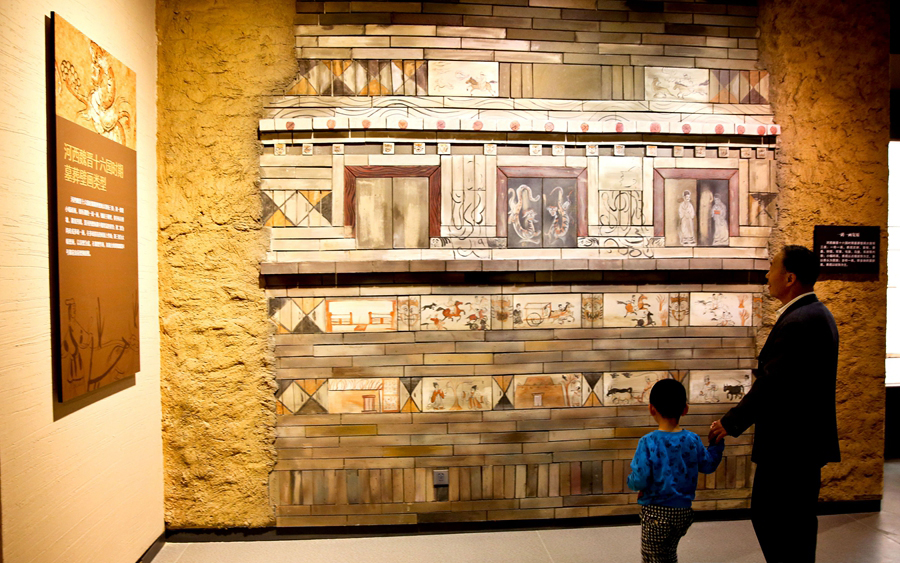Ancient murals along the Hexi Corridor

People visit an exhibition of murals of Wei-Jin tombs discovered in the Hexi Corridor region.
In bygone eras, the Hexi Corridor in Gansu Province was the only route to the Silk Road. It was a frontier and strategic passage where foreign cultures collided with the cultures and traditions of the Central Plain.
During the Wei and Jin dynasties and the Sixteen States period, the Hexi Corridor ushered in a historical opportunity for prosperity. After the collapse of the Western Jin Dynasty, rivals fought for the throne. The warfare led to severe turmoil and prompted waves of emigration. The remote Hexi Corridor region was far removed from the turmoil and retained relative stability and peace.
Chen Yinke, a famous historian in 20th century China, indicated in his work Draft Essays on the Origins of Sui and Tang Institutions that the culture of the Northern Wei Dynasty inherited customs of the Sixteen States period. The Hexi Corridor region exerted a great influence on the cultural development of the Northern Wei Dynasty. Many rulers of the Hexi Corridor region were not of the Han nationality, but they respected Han culture and it was well preserved in the area.
The Hexi Corridor region, a significant passage on the Silk Road, was adjacent to the Western Regions of China. This meant it was incessantly impacted by exotic cultures. Eastern and western cultural elements collided, mixed and interchanged with each other in this land, creating a splendid, magnificent and complicated cultural image of the Hexi Corridor region. The Wei-Jin mural tombs excavated in the region provide us a window to better understand the customs, traditions and lifestyles of people of this period.
In 1944, the first mural tomb was discovered in Dunhuang of the Hexi Corridor region. In the past seven decades, more than 50 Wei-Jin mural tombs were unearthed in the corridor. The archaeological work tremendously promoted the studies of murals in the tombs. The murals have myriad themes which all involve the social activities of Hexi ancestors in all respects. The images in the murals are delicate in composition and use simple colors and exaggerated shapes. They not only reveal the influence of traditional culture of the Central Plain, but also show the characteristics of the local ethnic groups and completely reflect the important role of the corridor as a cultural hub on the Silk Road.
Zhou Zhongqiang is from the Graduate School of the Chinese Academy of Social Sciences.
